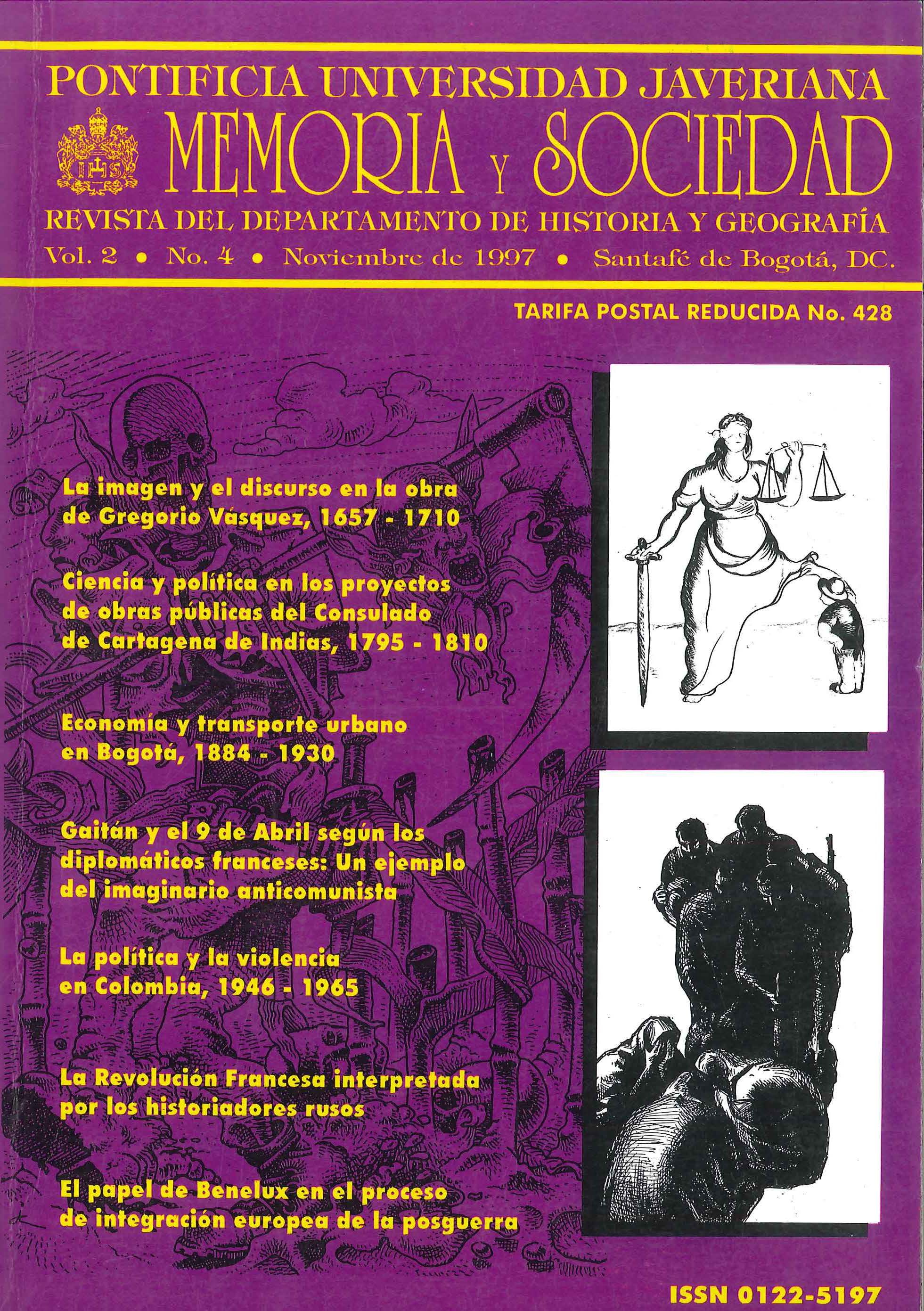Resumen
Usando las pinturas de Gregorio Vásquez, este articulo integra al arte y la historia cultural como fuentes de la historia social durante el periodo colonial. En la primera sección, el autor demuestra cómo la concepción colonial latinoamericana del mundo difería de la perspectiva europea. Las instituciones religiosas en América utilizaron las artes pictóricas como un medio para comunicar y circular ideas a través de imágenes y códigos. La segunda sección analiza los antecedentes de Vásquez y su trabajo. Desarrolló su estilo a través de la formación en la “escuela colonial”, pero algunos trazos de la “escuela europea” son evidentes en su trabajo. Caracterizadas por un cierto misticismo, las temáticas religiosas dominan sus pinturas. La sección final del artículo clasifica la obra completa de Velázquez utilizando un criterio que corresponde a las tres etapas críticas de la vida del artista.La revista Memoria y Sociedad se encuentra registrada bajo la licencia Creative Commons Reconocimiento 4.0 Internacional. Por lo tanto, esta obra se puede reproducir, distribuir y comunicar públicamente en formato digital, siempre que se reconozca el nombre de los autores y a la Pontificia Universidad Javeriana. Se permite citar, adaptar, transformar, autoarchivar, republicar y crear a partir del material, para cualquier finalidad (incluso comercial), siempre que se reconozca adecuadamente la autoría, se proporcione un enlace a la obra original y se indique si se han realizado cambios. La Pontificia Universidad Javeriana no retiene los derechos sobre las obras publicadas y los contenidos son responsabilidad exclusiva de los autores, quienes conservan sus derechos morales, intelectuales, de privacidad y publicidad.
El aval sobre la intervención de la obra (revisión, corrección de estilo, traducción, diagramación) y su posterior divulgación se otorga mediante una licencia de uso y no a través de una cesión de derechos, lo que representa que la revista y la Pontificia Universidad Javeriana se eximen de cualquier responsabilidad que se pueda derivar de una mala práctica ética por parte de los autores. En consecuencia de la protección brindada por la licencia de uso, la revista no se encuentra en la obligación de publicar retractaciones o modificar la información ya publicada, a no ser que la errata surja del proceso de gestión editorial. La publicación de contenidos en esta revista no representa regalías para los contribuyentes.


